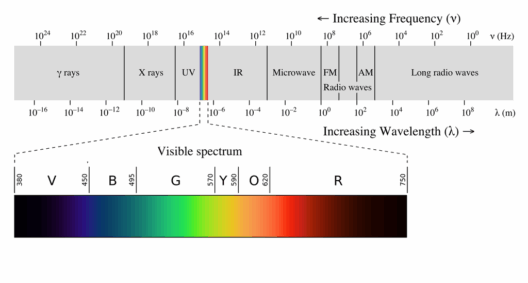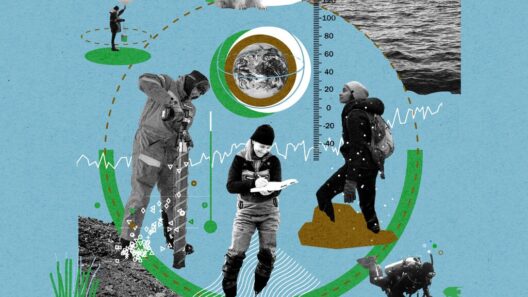The Arctic, often romanticized as a pristine expanse of ice and snow, is undergoing a cataclysmic transformation due to the ravages of global warming. This frozen frontier, once thought to be immune to the drastic changes that afflict other ecosystems, is revealing a troubling narrative that goes beyond mere melting ice. It beckons us to reassess our relationship with this vitally important and fragile environment. The observable alterations, coupled with the profound implications of these shifts, make the Arctic a locus of both scientific inquiry and environmental urgency.
One cannot overlook the stark visuals associated with the melting of Arctic ice. Satellite images depict glaciers calving into the ocean like titanic sculptures collapsing under their own weight. The prospect of an ice-free Arctic during summer months is no longer a distant hypothesis; it is a burgeoning reality. This phenomenon is not solely a matter of aesthetic melancholy. The ramifications of diminishing ice cover extend to global weather patterns, sea levels, and biodiversity. It establishes a grim narrative that unfolds before our eyes, igniting a fascination rooted not in the beauty of the landscape, but in the sobering realization of its fragility.
As ice retreats, the Arctic is transformed into an open ocean, offering new shipping routes and access to previously untapped natural resources. This newfound accessibility piques the interest of nations and corporations alike, leading to the potential for exploitation and conflict over these vulnerable territories. The geopolitical ramifications of this evolution are staggering; with increased human activity comes heightened environmental risk. Oil spills, overfishing, and habitat destruction threaten to exacerbate the very changes that prompted our interest in this region.
Yet, the Arctic is not merely a stage for human ambition; it is a complex and interconnected ecosystem. The indigenous communities that have historically inhabited these lands possess a profound understanding of the intricate relationships among species and their environment. The changes brought about by global warming disrupt traditional ways of life, forcing adaptation and survival strategies that are often at odds with modernity’s relentless march. The loss of sea ice threatens polar bears, seals, and myriad other species, revealing an intricate web of interdependence that binds together climate, wildlife, and human communities.
Moreover, the Arctic plays a pivotal role in regulating the Earth’s climate. The albedo effect—whereby ice reflects sunlight—maintains a delicate balance within the Earth’s thermal systems. As ice diminishes, darker ocean waters absorb heat, further exacerbating warming trends. This feedback loop exemplifies the profound complexity of climate systems, where changes in one region can induce widespread consequences. Thus, the fascination with the Arctic extends beyond its immediate visual and ecological challenges; it encompasses a fundamental understanding of Earth’s interconnectedness.
The melting Arctic also liberates carbon stored in permafrost, another insidious layer of the climate crisis. As the ground thaws, ancient carbon dioxide and methane are released, exacerbating warming in a cascading effect. This eerily quiet but potent feedback mechanism underscores the pressing need for comprehensive climate strategies that address both emissions and the protection of vulnerable ecosystems. It raises questions about our capacity to mitigate these effects amid a backdrop of competing interests and governance challenges. The Arctic becomes a microcosm of the broader climate struggle—what happens here impacts us all.
The fascination with the Arctic, then, is steeped not merely in its exoticism or the allure of exploration, but in the profound and immediate urgency that its transformation signifies. It anchors our understanding of climate change in a tangible reality, illustrating the way our actions resonate across the globe. The stark beauty of icebergs and frozen landscapes serves as a poignant reminder of what is at stake—the biodiversity, cultural heritage, and climate stability that we risk losing forever.
While the unfolding narrative surrounding the Arctic is unnerving, it also inspires collective action. Climate scientists, environmental advocates, and indigenous voices work in concert to advocate for preservation and responsible stewardship of this fragile region. Policies aimed at reducing greenhouse gas emissions, protecting habitats, and respecting indigenous rights are critical components in combatting the destructive forces of climate change. The Arctic can serve as a beacon of possibility, galvanizing a global movement toward sustainable practices and respecting the ecological limits of our planet.
In conclusion, the Arctic stands as a testament to the changes wrought by global warming, embodying a myriad of consequences that resonate far beyond its icy borders. Our fascination with this region must evolve into a compelling narrative of vigilance and responsibility. The urgency to comprehend and protect the Arctic is not merely an environmental issue; it encapsulates the broader implications of our impact on the planet. As stewards of Earth, we hold the potential to redefine our interaction with the Arctic, ensuring that its story is one not of loss, but of resilience and hope.







